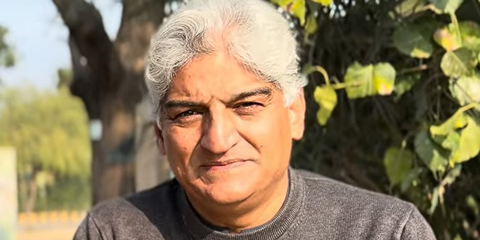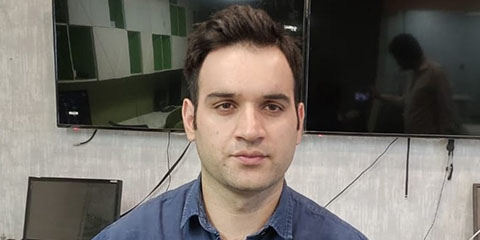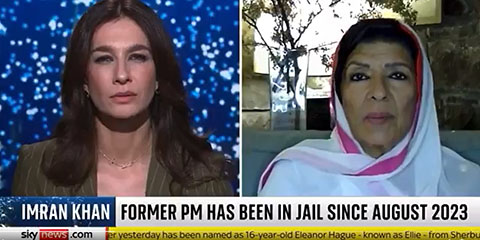The future of investigative reporting in a clickbait culture
JournalismPakistan.com | Published 3 months ago | JP Special Report
Join our WhatsApp channel
ISLAMABAD — In today’s fast-moving digital media world, journalism faces one of its greatest challenges: how to keep investigative reporting alive in an environment ruled by clickbait. Investigative journalism has historically been the heartbeat of democracy, exposing corruption, holding the powerful accountable, and giving voice to the voiceless. Yet in the era of instant gratification, short attention spans, and algorithm-driven newsfeeds, this essential form of reporting risks being drowned out by flashy headlines and quick-hit content.
This raises a vital question: can investigative journalism survive and even thrive in a clickbait culture?
The Rise of Clickbait Culture in Digital News
Clickbait headlines are designed to grab attention, trigger emotions, and encourage clicks, often at the expense of depth and accuracy. Platforms reward traffic, time-on-page, and engagement metrics, not necessarily truth or nuance. This shift has pressured many newsrooms to prioritize speed over substance.
For investigative journalists, whose work can take months or even years to complete, the clickbait model creates a mismatch. Long-form, data-driven reporting rarely generates instant viral traction. Instead, it demands patience, resources, and an audience willing to invest time in complex narratives.
Why Investigative Journalism Still Matters
Despite these pressures, investigative journalism remains indispensable. Without it, major scandals, from the Panama Papers to the Cambridge Analytica revelations, would never have come to light. Investigative work does more than inform; it shapes policy, changes laws, and sometimes even topples governments.
Audiences may skim headlines, but research consistently shows that people still value trustworthy, in-depth reporting, especially in times of crisis. When misinformation spreads rapidly, credible investigative stories act as anchors of truth.
Technology and Investigative Reporting: A Double-Edged Sword
Ironically, the same digital tools that fuel clickbait can also empower investigative reporters. Social media platforms allow journalists to crowdsource information, reach whistleblowers, and distribute stories globally in real time.
Emerging technologies—AI-driven data analysis, open-source intelligence (OSINT), satellite imagery, and blockchain verification are transforming how reporters track evidence, verify sources, and uncover hidden patterns. The success of global collaborations like the International Consortium of Investigative Journalists (ICIJ) proves that technology can amplify the reach and impact of investigative projects rather than diminish them.
Investigative Journalism Funding Models in a Clickbait Economy
The most significant hurdle is financial. Investigative journalism is expensive, requiring dedicated time, skilled professionals, legal safeguards, and editorial backing. Meanwhile, advertising revenues increasingly flow to tech giants such as Google and Meta, leaving traditional newsrooms strapped for resources.
New funding models are helping fill the gap:
- Nonprofit news organizations supported by philanthropy.
- Membership-driven outlets where readers directly fund reporting.
- Hybrid media formats such as podcasts, video documentaries, and newsletters that reach new audiences.
- Collaborative journalism where costs and expertise are shared across borders.
Readers are showing a willingness to pay for trustworthy journalism—The Guardian’s membership model and The New York Times’ subscription growth are strong examples of sustainability in action.
Rebuilding Trust in Journalism
In a world overflowing with information, trust has become the new currency. Audiences are skeptical, often struggling to distinguish facts from opinion, or credible news from misinformation. Investigative reporting—when transparent, factual, and accountable—can stand out precisely because it offers depth and credibility that clickbait cannot.
This requires not only exposing corruption but also explaining the process of journalism itself. Outlets that show how they verify facts, protect sources, and fund stories are more likely to earn loyalty in a skeptical media environment.
The Road Ahead: Reinventing Investigative Reporting
The future of investigative journalism in a clickbait culture is not one of extinction but reinvention. Survival depends on:
- Adapting storytelling formats to meet digital audiences (multimedia, data visuals, podcasts, TikTok explainers).
- Collaborating across borders to share costs and amplify impact.
- Building direct relationships with audiences through memberships, subscriptions, and transparency.
- Leveraging technology responsibly without losing sight of ethics and accuracy.
While clickbait may dominate today’s newsfeeds, it lacks staying power. Investigative reporting, though slower, creates lasting impact. Audiences may click on sensational headlines, but they remember and respect the stories that uncover truths and drive change.
In the end, the battle is not between investigative journalism and clickbait; it is between substance and noise. And history shows that, no matter how loud the noise, truth has a way of breaking through.

























